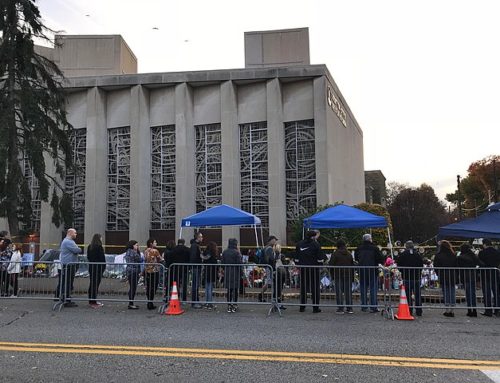David Kertzer, a finalist for the National Book Award and professor of history at Brown University, provided a groundbreaking work on the relationship between Pope Pius XI and the Italian dictator, Benito Mussolini. It gave me a new understanding of the Vatican’s role in the rise of Fascism in Europe. Kertzer through wonderful story telling focused on these two men who came to power in 1922, and how their relationship certainly changed the role of the Vatican and Italy. Kertzer’s book provided me some insight into the more sinister relationship between the Vatican and Nazi Germany. Specifically, the pope and almost all of his key advisors felt that fascism provided a Christian bulwark against their many enemies—Capitalism, Democracy, Jews, Protestants, Socialists, Communists, and masons. Hitler could make two arguments; (1) his anti-Semitic policies were aimed at destroying international Jewry—the malicious forces behind both anti-Christian capitalism and Communism. (2) He was just implementing historical Catholic policies towards Jews. In brief, the Nuremberg laws (1935) that removed Jewish citizenship in Germany were in accord with papal policies when the Papacy ruled much of Italy.
Let me try to explain the world from the perspective of Pius XI. In brief, when he became pope, he inherited a legacy of reclusiveness. That is, the modern Italian state was built upon the ashes of Papal rule. In 1870, the forces of King Emanuel I, in forging a united Italy undermined Papal rule in many areas of the country. The popes retreated to the 120 acres surrounding the Vatican and remained virtual prisoners of that enclave for almost 60 years, never venturing outside that small domain.
Surprising Facts:
Despite forging a workable relationship, Pius XI and Mussolini, only met once. For 17 years the two men held sway over their separate spheres in Rome. They communicated ceaselessly by means of ambassadors and nuncios, through the press (each had his tame organ) and via less publicly accountable go-betweens. From the copious records of their exchanges Kertzer has uncovered a fascinating tale of two irascible – and often irrational – potentates, and gives us an account of some murky intellectual finagling, and an often startling investigation of the exercise of power.
Pius XI disliked all modern socio-political movements—democracy, capitalism, communism, and fascism. All of these threatened the power of the Church. The popes were particularly bitter toward democracy and communism, feeling that these regimes spurned the historical hegemony of Catholicism, instituting a separation of Church and State. Alternatively, fascist Italy had brought Christianity back to Italy, reinserting the crucifix into areas heretofore banned by the State—schools, court rooms, public facilities, etc.
Why did Mussolini and Pius XI collaborate?
For Pius XI, forging an understanding with fascism was essential in order for Italy to once again to become a Catholic nation, rather than prolonging the separation of church and state that had existed since 1870. In turn, Mussolini felt that Vatican support was a keystone for retaining power, where 99% of the population was nominally Catholic. In exchange for Vatican support, Mussolini restored many of the privileges the Church had lost and gave in to the pope’s demands that the police enforce Catholic morality. For example, Pope Pius XI, expressly forbade former priests from teaching posts or holding positions of power in Fascist Italy.
What Treaty Solidified Fascist-Papal Solidarity?
The Lateran Pacts of 1929 established the current relationship between the Kingdom of Italy and the Holy See. (After World War II, the newly reinstituted democratic government of Italy provided on-going support for the rights won by the Church in 1929)
-
A political treaty recognizing the full sovereignty of the Holy See in the State of Vatican City, providing extraterritorial privileges and exemption from expropriation and taxes.
Did Pius XI wane in his enthusiasm for Mussolini?
In the last years of his life—as the Italian dictator grew ever closer to Hitler—the pontiff’s faith in this treacherous bargain started to waver. With his health failing, he began to lash out at the Duce and threatened to denounce Mussolini’s anti-Semitic racial laws before it was too late. Horrified by the threat to the Church-Fascist alliance, the Vatican’s inner circle, including the future Pope Pius XII, struggled to restrain the headstrong pope from destroying a partnership that had served both the Church and the dictator for many years.
Kertzer describes Pius XI’s last pathetic days when he wishes to deliver a message that “all nations, all races including Jews, could be united by faith. After his death Cardinal Pacelli (the future Pius XII) suppressed the speeches text.
Pius XI opposed fascism’s arguments that the state should be all-powerful (totalitarian). It was not because Pius XI believed in individual liberty, but because he felt that “man belongs totally to the church.”
The Pope and Mussolini brims with memorable portraits of the men who helped enable the reign of Fascism in Italy: Father Pietro Tacchi Venturi, Pius’s personal emissary to the dictator, a wily anti-Semite known as Mussolini’s Rasputin; Victor Emmanuel III, the king of Italy, an object of widespread derision who lacked the stature—literally and figuratively—to stand up to the domineering Duce; and Cardinal Secretary of State Eugenio Pacelli (Future Pope Pius XII), whose political skills and ambition made him Mussolini’s most powerful ally inside the Vatican, and positioned him to succeed the pontiff. As the controversial Pius XII, his actions during World War II would be subject for debate for decades to come.
The Church’s zealous support of the Italian invasion of Ethiopia on the grounds that it would bring Christianity to the heathens reminds one of the simplistic, non-tolerant, messaging articulated during the Crusades. The Vatican’s position relatively to Mussolini joining Hitler during World War II needs to be examined given their zealous ceaseless support for Mussolini during his reign.
Pervasive Anti-Semitism
The anti-Semitic views of Pius XI, and his key Vatican advisors, are frightening. Continued church writings emphasized that the Church needed to fear the Jews and their “evil-doing.” In countless polemics, leading Church publications argued that Jews were the main supporters of Communism and mason-democratic regimes that sought to destroy true Christianity. Repeatedly, church documents grossly overstated the role of Jews in Communist Russia. They claimed that over 90% of the key officials in the Soviet Union were Jewish, when the true number was about 6%. Kertzer and John Cornwell, the author of Hitler’s Pope, on Pius XII exposed the Vatican’s culpable passivity in the face of the wartime persecution of Jews. These authors highlight the Catholic tradition of authoritarianism, their intolerance of opposition (Protestantism, Democracy, Communism and Judaism)
When it comes to the “Jewish question”, Kertzer demonstrates that the Pope’s failure to protest effectively against the fascist racial laws arose not simply from weakness, but because anti-Semitism pervaded his church.
Mussolini argued that he would do nothing to Italy’s Jews that had not already been done under papal rule. Roberto Farinacci, most brutal of the fascist leaders, came close to the truth when he announced: “It is impossible for the Catholic fascist to renounce that anti-Semitic conscience which the church had formed through the millennia.” And Catholic anti-Semitism was thriving. Among Pius’s most valued advisers were several who – as Kertzer amply demonstrates – saw themselves as battling against a diabolical alliance of communists, Protestants, freemasons and Jews. “Jews were a cursed people because of their unwillingness to recognize the divinity of Jesus and their culpability for his death.
Mussolini’s Transition
The accession of Mussolini, known in his youth as mangiaprete – priest-eater – didn’t bode well for the papacy. The fascist squads had been beating up clerics and terrorizing Catholic youth clubs. But Mussolini saw that he could use the church to legitimize his power, so he set about wooing the clergy. He had his wife and children baptized. He gave money for the restoration of churches. After two generations of secularism, there were once again to be crucifixes in Italy’s courts and classrooms. Warily, slowly, the Pope became persuaded that with Mussolini’s help Italy might become, once more, a “confessional state”.
Conclusion
Pius XI almost seems like a medieval caricature. In the 1930’s instead of fretting about the challenge to liberty posed by the fascists, he spent enormous energy over inadequately dressed women – backless ball gowns and the skimpy outfits of female gymnasts were particularly worrisome. Mussolini played along, solemnly declaring that, in future, girls’ gym lessons would be designed only to make them fit mothers of fascist sons.
Sadly, both Pius XI and Pius XII, were stuck with their bargain with Mussolini. After the concordat, in which the Vatican repeatedly stated that Mussolini “ruled by Providence” the Church was ineffective in thwarting fascist policies. Mussolini even required schoolchildren and priests to pray for him.
I would hope that Kertzer would write a book about John XXIII who was instrumental in totally altering the Church’s position relative to non-Catholics. Because of the Second Ecumenical, the Church retracted claims that Jews as a whole were historically responsible for Jesus’s crucifixion and that present-day Jews have no culpability. Needless to say, the Pope behind this monumental change in Church policy deserves vetting.
.



